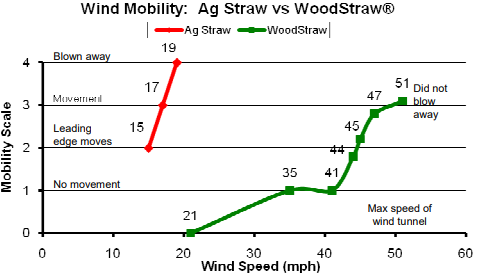Abstract
Wind erosion is a widespread problem in much of the western United States due to arid conditions and persistent winds. Fugitive dust from eroding land poses a risk to both environmental quality and human health. Since the advent of the Clean Air Act in 1971, ambient air quality standards have been set regulating particulate matter in the atmosphere. Agricultural straw has been widely used for erosion control, but there are numerous drawbacks to its use. In addition to the fact that it is a lightweight material and lacks stability during high wind events, there is growing concern over the introduction of noxious weeds to wildlands, chemical residues from pesticides, and risks associated with dust particles liberated from the shattering of straw elements during the application process. The efficacy of a wood strand material, a wood analog to straw, for wind erosion mitigation was investigated during this study. A series of wind tunnel tests were conducted to evaluate material properties of wood strands in terms of reducing total sediment loss and maintaining air quality. Results indicate that wood strands are stable at wind speeds of up to 18 m/s, while wheat straw is only stable at wind speeds of up to 6.5 m/s. At a wind velocity of 18 m/s, the straw, due to its instability, did not reduce soil loss; however, wood strands reduced total sediment loss and peak dust emissions by over 90% when compared to a bare soil.
About the Publication
Copeland, N.S., B.S. Sharratt, R.B. Foltz, J.Q. Wu, J.H. Dooley (2006). Evaluating material properties to optimize wood strands for wind erosion control. ASABE Paper No. 062199. American Society of Agricultural and Biological Engineers. St. Joseph, MI. 9.
Read the full article in PDF format:

